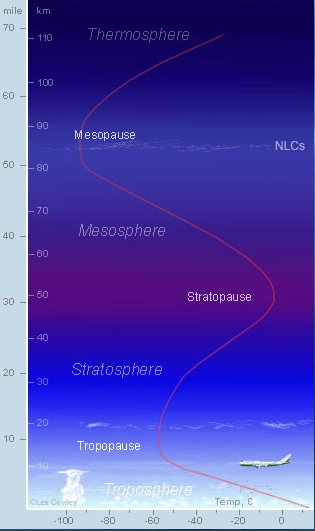OPOD - NLC season
OPOD - NLC Season: A Spectacular Display of Noctilucent Clouds
Noctilucent clouds, also known as NLCs, are a mesmerizing atmospheric phenomenon that occurs in the highest reaches of Earth's atmosphere. These ethereal clouds are composed of sub-micron-sized ice crystals and can be found in a layer approximately 80-85 km (50-53 miles) above the Earth's surface, just a few kilometers below the mesopause, the coldest region of the atmosphere.
What makes NLCs truly captivating is their ability to remain illuminated by sunlight long after the sun has set at ground level. Unlike their stratospheric counterparts, known as nacreous clouds, NLCs do not exhibit iridescent colors due to the small size of their ice crystals. Instead, they shimmer with a bluish-white hue, radiating a sense of otherworldly beauty.
The Northern Hemisphere NLC season typically spans from mid-May to mid-August. During this period, NLCs are exposed to sunlight for extended periods, and the mesosphere, where they reside, reaches its coldest temperatures. In fact, temperatures below -123°C (-189°F) are necessary for NLC formation, adding to their rarity and allure.
To witness this celestial spectacle, it is important to find an ideal viewing location. Away from light pollution and the glare of artificial lights, one should direct their gaze towards the northern horizon, particularly the northwest before midnight. NLCs have a distinct appearance and tend to remain stationary compared to lower-level clouds. Using binoculars can help differentiate them from regular clouds, as NLCs display a characteristic skein-like structure and appear sharper.
While latitudes between 50-65° offer the best chances of observing NLCs, these stunning clouds have been spotted much further south. Sightings have been reported in countries such as Austria, Hungary, Italy, and southern Germany, as well as in the United States, specifically in Utah and Colorado.
The mesmerizing nature of NLCs makes them a subject of fascination for both amateur and professional skywatchers. Their delicate beauty, high-altitude location, and unique reflective properties have inspired countless photographers and artists to capture their ethereal essence.
In conclusion, the NLC season offers a remarkable opportunity to witness one of Earth's most captivating atmospheric displays. These enigmatic clouds, composed of tiny ice crystals suspended high above the Earth's surface, shimmer with a bluish-white glow long after sunset. To experience the awe-inspiring beauty of NLCs, one must seek out a dark and clear location, away from light pollution, and direct their gaze towards the northern horizon. Whether you're an avid sky enthusiast or simply appreciate the wonders of nature, the NLC season is an event not to be missed.

NLC Season Starts
Noctilucent clouds over County Donegal, Ireland pictured by Peter otoole. This bright display was last year's but is a reminder that the Northern Hemisphere 2011 season is now with us. ©Peter otoole, shown with permission.


Noctilucent clouds are Earth�s highest. They are composed of sub micron sized ice crystals in a 80-85 km (50-53 mile) high layer that is a few km below the mesopause, the coldest area of the atmosphere.
At these heights the crystals remain in sunlight long after the sun has set at Earth�s surface. They shine purely by reflected light and unlike stratospheric nacreous clouds they do not show iridescent colours � their crystals are too small for that.
Look for them in the Northern Hemisphere from mid May until mid August. That is when they are in sunlight for the longest and when the mesosphere is at its coldest. Temperatures below -123�C are necessary for NLCs to form.
Look when the Moon does not interfere and away from light pollution and the glare of �security� lights. Look to the northern horizon (NW before midnight) for bluish white clouds. NLCs hardly move compared to the motion of lower clouds. Binoculars help to distinguish them from lower clouds � NLCs have a characteristic skein like structure and they appear sharper.
A latitude of 50-65� is best but NLCs are seen much further south. They have been sighted in Austria, Hungary, Italy and southern Germany and in Utah and Colorado in the US.
Note: this article has been automatically converted from the old site and may not appear as intended. You can find the original article here.
Reference Atmospheric Optics
If you use any of the definitions, information, or data presented on Atmospheric Optics, please copy the link or reference below to properly credit us as the reference source. Thank you!
-
<a href="https://atoptics.co.uk/blog/opod-nlc-season/">OPOD - NLC season</a>
-
"OPOD - NLC season". Atmospheric Optics. Accessed on November 26, 2024. https://atoptics.co.uk/blog/opod-nlc-season/.
-
"OPOD - NLC season". Atmospheric Optics, https://atoptics.co.uk/blog/opod-nlc-season/. Accessed 26 November, 2024
-
OPOD - NLC season. Atmospheric Optics. Retrieved from https://atoptics.co.uk/blog/opod-nlc-season/.